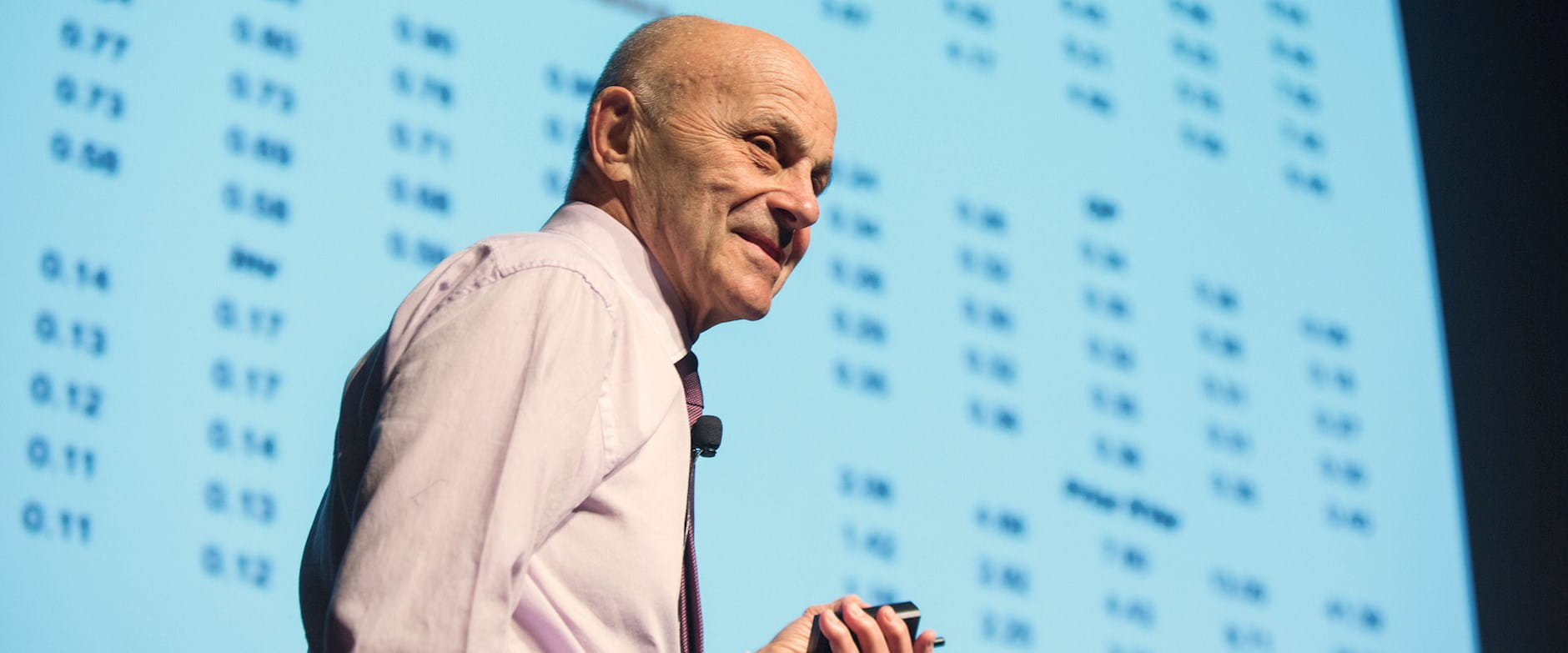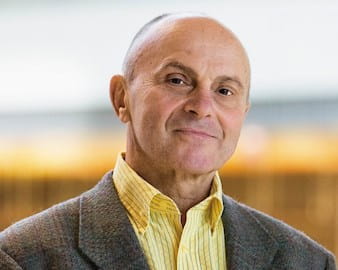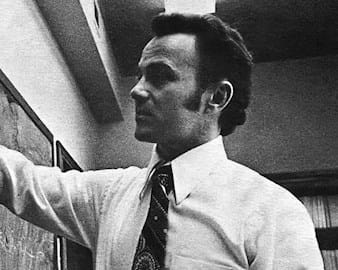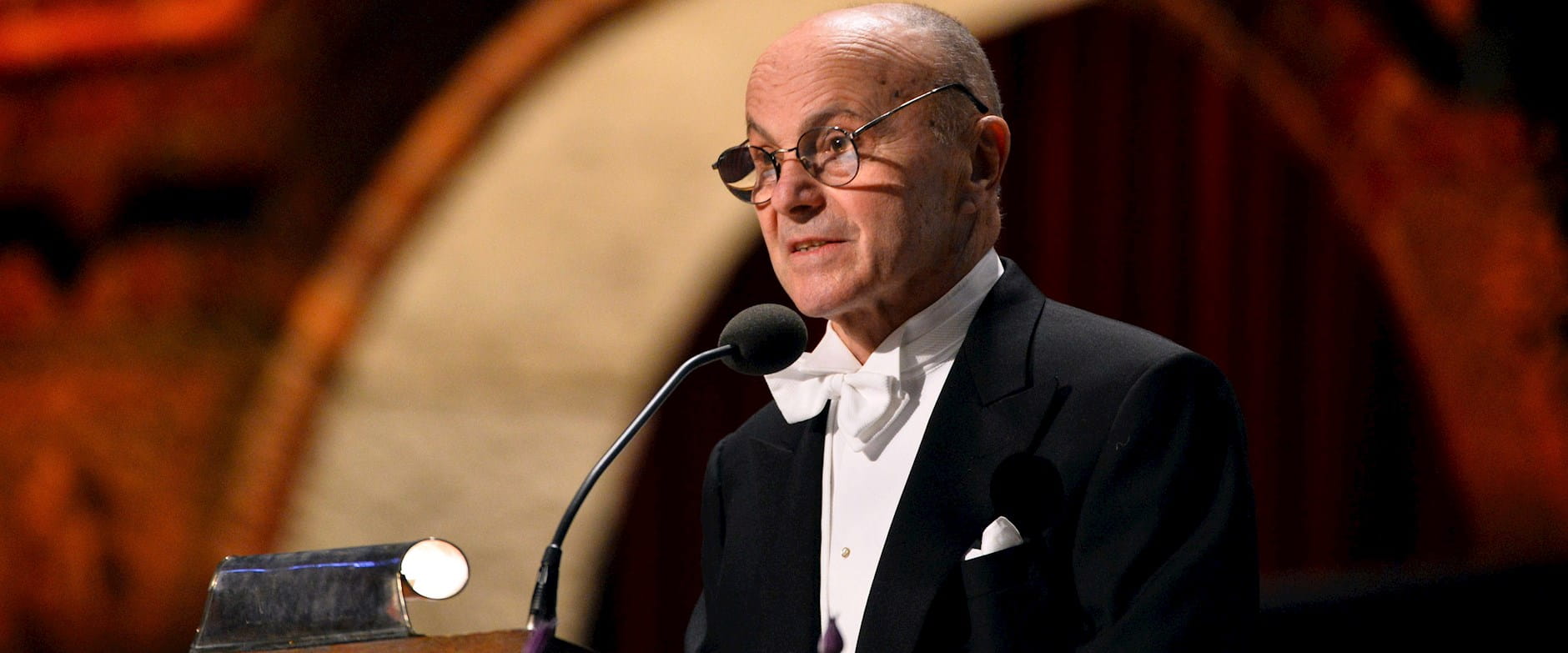
1960
Graduated from Tufts University with a bachelor’s degree in Romance languages


In a career that has spanned nearly 60 years, Eugene F. Fama has published more than 100 articles in the world’s top economics journals, written two landmark books, and received dozens of awards for his revolutionary work—including the 2013 Nobel Prize in Economic Sciences.
Fama was born in 1939 in the suburbs of Boston, a third-generation Italian American whose grandparents immigrated to the United States from Sicily in the early 1900s. The son of a truck driver who worked in the shipyards during World War II, Fama attended Malden Catholic High School, a private all-boys school, where he became a star athlete. Later, he was inducted into his high school’s athletic hall of fame.
The future Nobel laureate was the first in his family to attend a university and earn a degree. While studying Romance languages at Tufts in the late 1950s, he took an economics course, and it forever changed his life. Encouraged by his professors at Tufts to go to graduate school, Fama enrolled at the University of Chicago in 1960. Aside from a two-year stint teaching in Belgium, he has spent his career researching and teaching at the University of Chicago.
The timing of Fama’s arrival at the University of Chicago in the early 1960s proved serendipitous. During that period of time, some of the world’s leading finance and economics scholars, including Merton H. Miller, Harry Roberts, and Lester Telser, were on the faculty. As a young scholar, Fama had an abundance of opportunities to discuss research ideas with true intellectual giants and be guided by their invaluable recommendations.
Miller in particular had a profound impact on Fama and his work (Fama considered Miller his mentor). Miller provided Fama with regular feedback on his early research—including research that would eventually lay the groundwork for Fama’s landmark 1970 paper, “Efficient Capital Markets: A Review of Theory and Empirical Work.” The two also cowrote a book together in 1972, The Theory of Finance.
Later, in 1993, Fama worked with Kenneth R. French and developed the Fama-French three-factor model. The model challenges the validity of the capital asset pricing model (CAPM), which suggests that only a stock’s beta can explain its average return. The Fama-French three-factor model shows that two other variables, size risk and value risk, should be considered. In 2015, the two scholars published a paper in the Journal of Financial Economics outlining their new five-factor asset pricing model.
Over the course of his enduring and impactful career, Fama has become one of the most-cited researchers in economics. He has also made profound contributions to Booth and to the University of Chicago. He was instrumental in the foundation and growth of the Fama-Miller Center for Research in Finance and the Center for Research in Security Prices.

“If active managers win, it has to be at the expense of other active managers. And when you add them all up, the returns of active managers have to be literally zero, before costs. Then after costs, it’s a big negative sign.”
—Eugene F. Fama
Fama’s Nobel Prize–winning work “not only had a profound impact on subsequent research but also changed market practice,” the Nobel Committee said in its announcement of the 2013 Nobel Prize in Economic Sciences award. They went on: “The emergence of so-called index funds in stock markets all over the world is a prominent example.”
In his paper “Efficient Capital Markets: A Review of Theory and Empirical Work,” published in the Journal of Finance in 1970, Fama determined markets to be “informationally efficient.” The paper revolutionized the field of financial economics, largely by providing future financial economists with a new framework to approach their own empirical work, inspiring many to test the validity of the efficient-market hypothesis.


Graduated from Tufts University with a bachelor’s degree in Romance languages

Earned his MBA and joined the Chicago Booth faculty

Earned his PhD from Booth; his dissertation was titled “The Behavior of Stock Market Prices”
1964
Published his landmark paper “Efficient Capital Markets: A Review of Theory and Empirical Work”

Published the book The Theory of Finance with fellow Nobel laureate Merton H. Miller

Published the book Foundations of Finance: Portfolio Decisions and Securities Prices

Elected as a fellow of the American Academy of Arts and Sciences

Elected as a fellow to the American Finance Association (first elected fellow)

Received the Deutsche Bank Prize in Financial Economics (first recipient)

Received the Morgan Stanley American Finance Association Award for Excellence in Finance (first recipient)

Recipient of the Onassis Prize in finance (first recipient)

Won the Nobel Prize in Economic Sciences, with Lars Peter Hansen and Robert Shiller

I love my work. I have no intention of stopping as long as I'm breathing—and I may even do it after that.
A Brief History of Finance and My Life at Chicago
The Nobel laureate is best known for work on efficient markets. But he also helped develop event studies, which have been used extensively in the field.
How Eugene F. Fama Has Left His Mark on Industrial Organization
Some advice from the father of efficient markets.
Embrace Passive Management Already